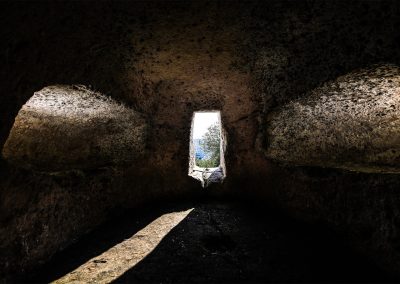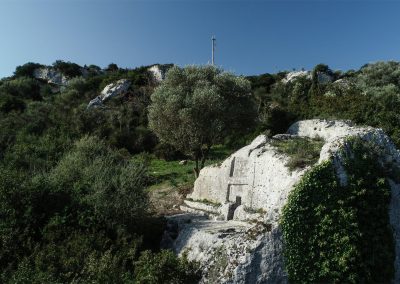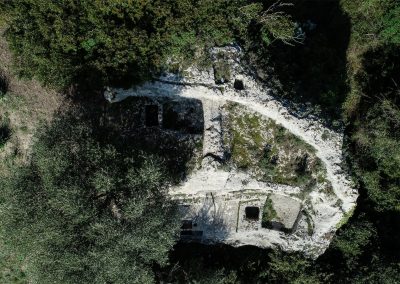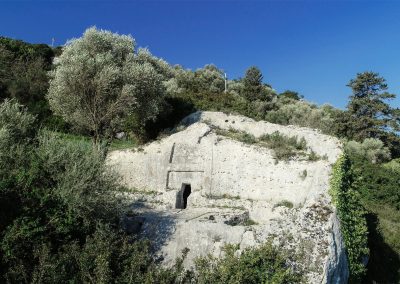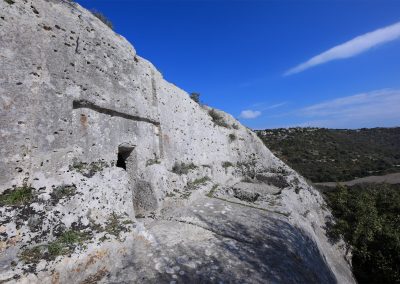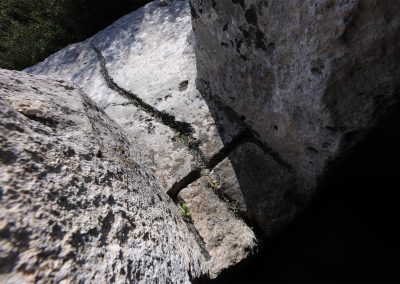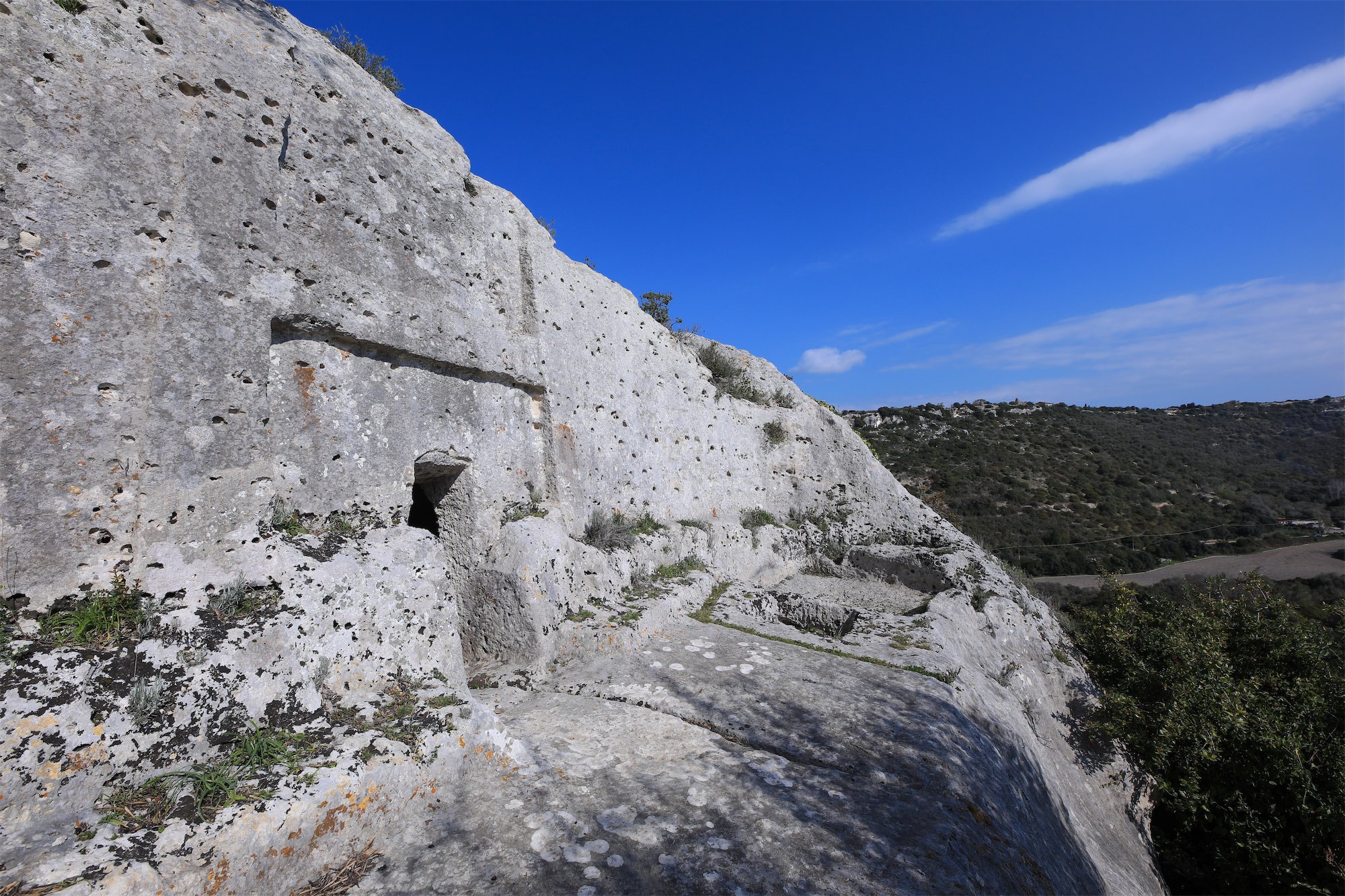
Tissi
Hypogeum Sas Puntas
To get to the hypogeum Sas Puntas, from the Documentation Centre of Tissi (old ex-slaughterhouse) there is a path: fifty metres from the centre, towards the exit for Sassari, turn right and follow the road for about two-hundred metres. From here, following the signs, there is a staircase and then a stone paved path that leads to the hypogeum. The tomb was excavated halfway up the slope of the mountain, inside a low limestone rock formation facing East-South-East and is located on a steep slope that descends towards the valley. The façade has a wide arch, in the middle of which there is a curved stele (tn* stone slab), elevated compared to the sides. The lower part of the stele is divided by a band with a lunette on top. The entrance is considerably altered, making it impossible to know whether the two steps framing it to form a bench seat were originally discontinuous, or if the lower one used to coincide with the architrave of the door. As a result of a successive intervention, the lower exedra on the north-east side is incomplete, in fact, compared to the country-side ground level it is elevated about two metres. Behind a small access door is a short corridor leading into an oval chamber, where there are elevated niches on each side. The ceiling appears concave and on the floor there is a cup mark at the back (tn* a cup mark consists of a concave depression, no more than a few centimetres across, pecked into a rock surface and often surrounded by concentric circles also etched into the stone). Near the entrance, a second cup mark was carved, smaller and decentralised, towards which a drainage channel converges, which also goes through the floor of the exedra. To create the upper exedra, the rock was cut on the surface and the burial was made in the middle of the hypogeum. The rock surface, near the stele, still has traces of two holes where small baetylus were attached, used to express a concept of sacred magic (tn* a baetylus is a sacred stone that anciently was supposedly endowed with life, or gave access to a deity). Both the upper exedra and the lower one have quadrangular cavities of different measures, like basins carved in rock, which are thought to be a clever rainwater collection system, made at a later time. The tomb is thought to be a surviving example of hypogeum of the Bronze Age.
Source: “Tissi, The Territory from Prehistory to The Middle Ages” (in Italian), by Pina Maria Derudas

